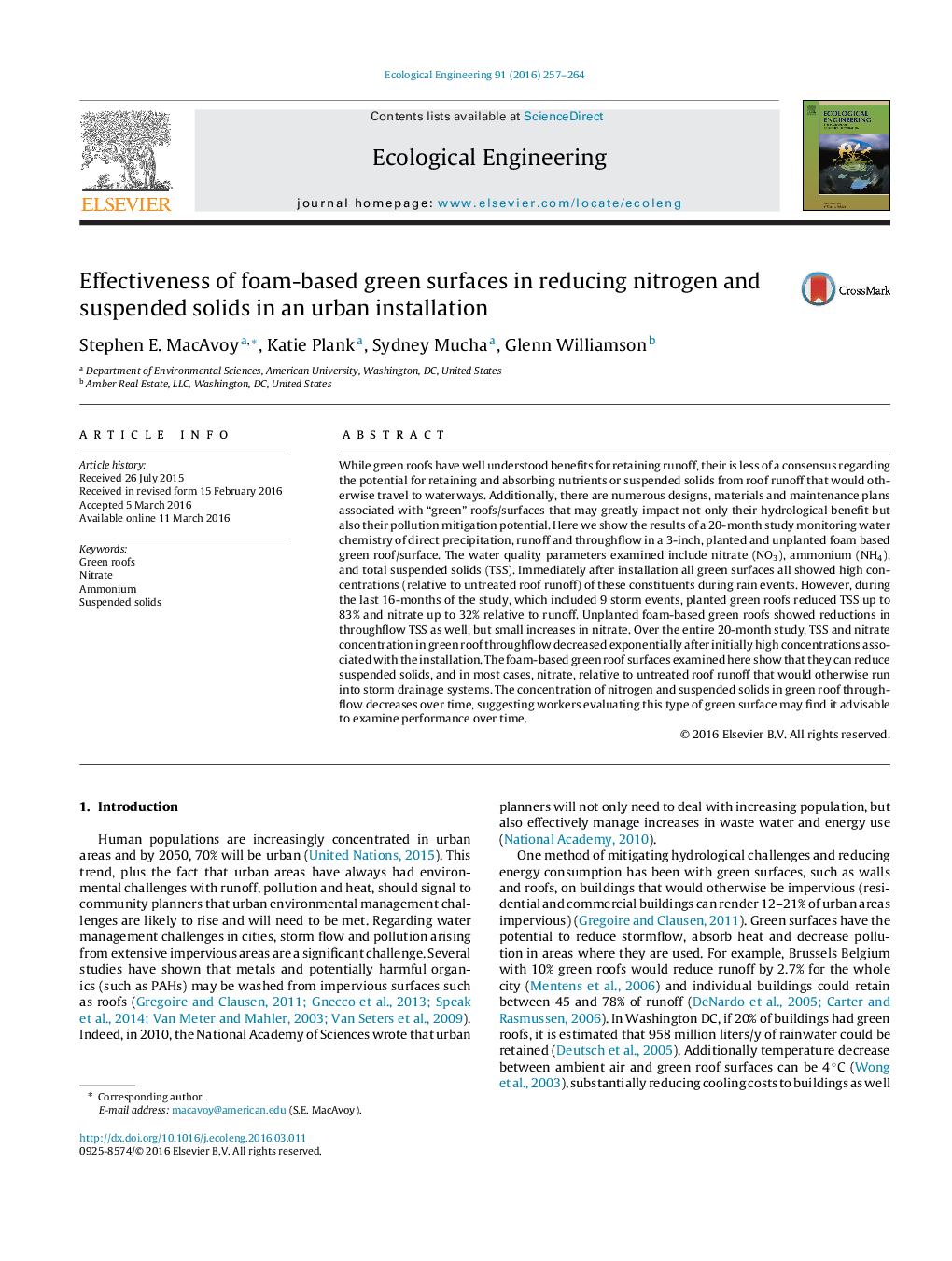| Article ID | Journal | Published Year | Pages | File Type |
|---|---|---|---|---|
| 6301322 | Ecological Engineering | 2016 | 8 Pages |
While green roofs have well understood benefits for retaining runoff, their is less of a consensus regarding the potential for retaining and absorbing nutrients or suspended solids from roof runoff that would otherwise travel to waterways. Additionally, there are numerous designs, materials and maintenance plans associated with “green” roofs/surfaces that may greatly impact not only their hydrological benefit but also their pollution mitigation potential. Here we show the results of a 20-month study monitoring water chemistry of direct precipitation, runoff and throughflow in a 3-inch, planted and unplanted foam based green roof/surface. The water quality parameters examined include nitrate (NO3), ammonium (NH4), and total suspended solids (TSS). Immediately after installation all green surfaces all showed high concentrations (relative to untreated roof runoff) of these constituents during rain events. However, during the last 16-months of the study, which included 9 storm events, planted green roofs reduced TSS up to 83% and nitrate up to 32% relative to runoff. Unplanted foam-based green roofs showed reductions in throughflow TSS as well, but small increases in nitrate. Over the entire 20-month study, TSS and nitrate concentration in green roof throughflow decreased exponentially after initially high concentrations associated with the installation. The foam-based green roof surfaces examined here show that they can reduce suspended solids, and in most cases, nitrate, relative to untreated roof runoff that would otherwise run into storm drainage systems. The concentration of nitrogen and suspended solids in green roof throughflow decreases over time, suggesting workers evaluating this type of green surface may find it advisable to examine performance over time.
